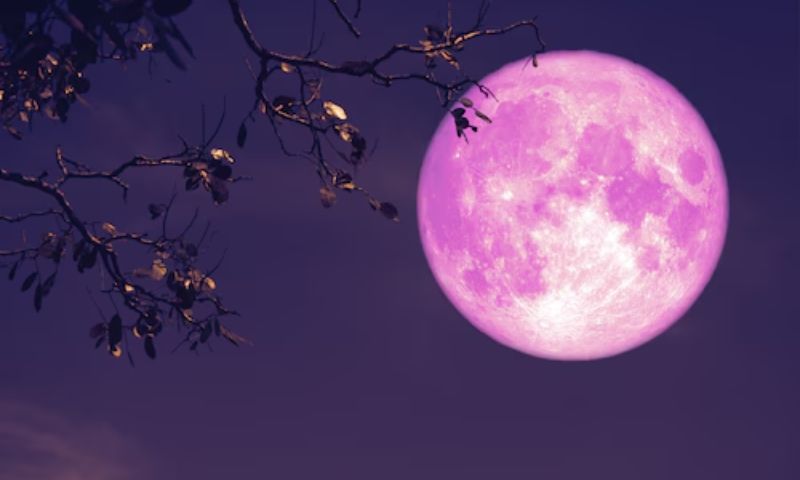WASHINGTON: Sky watchers will enjoy a full moon on Friday, June 21, known as the Strawberry Moon, which will coincide with the summer solstice.
The 2024 summer solstice occurred on June 20 at 4:51 p.m. Eastern time, as reported by the U.S. Naval Observatory. On June 21, the full moon will rise at 9:08 p.m. This “strawberry moon” is the lowest full moon of the year, staying close to the horizon while the sun reaches its highest point in the sky.
This event provides a special opportunity for stargazers and astronomy enthusiasts. According to NASA, the strawberry moon will appear full for three days, offering ample time for observation. The moon will seem larger, more colorful, and possibly brighter than usual. The full moon of June, often the last of spring or the first of summer, is traditionally called the strawberry moon. This name comes from the Native American tribes of the northeastern United States, marking the ripening season of “June-bearing” strawberries ready for harvest at this time. It is also referred to as the Berries Ripen Moon, signifying the period when flowers bloom and fruits ripen. However, the name has no connection to the moon’s color. The moon often appears reddish as it nears the horizon due to its light passing through the densest layers of the atmosphere, but this effect is unrelated to the name “strawberry moon.”
To witness the strawberry moon today, it is best to find a spot away from city lights and pollution, such as a rural area or open field. This will provide a clear view of the sky, ideal for capturing the moon’s beauty with a DSLR camera. Using a tripod can help stabilize your shots. Choose a comfortable place, and for a closer look, consider using binoculars or a telescope to enhance the experience.
However, the summer solstice occurs on June 21. This is when Earth’s North Pole reaches its maximum tilt toward the sun, and the sun appears at its northernmost point directly over the Tropic of Cancer, 23.5 degrees north of Earth’s equator. In the Northern Hemisphere, the sun follows its longest and highest path through the sky, resulting in the longest daylight hours and the shortest night of the year.
























